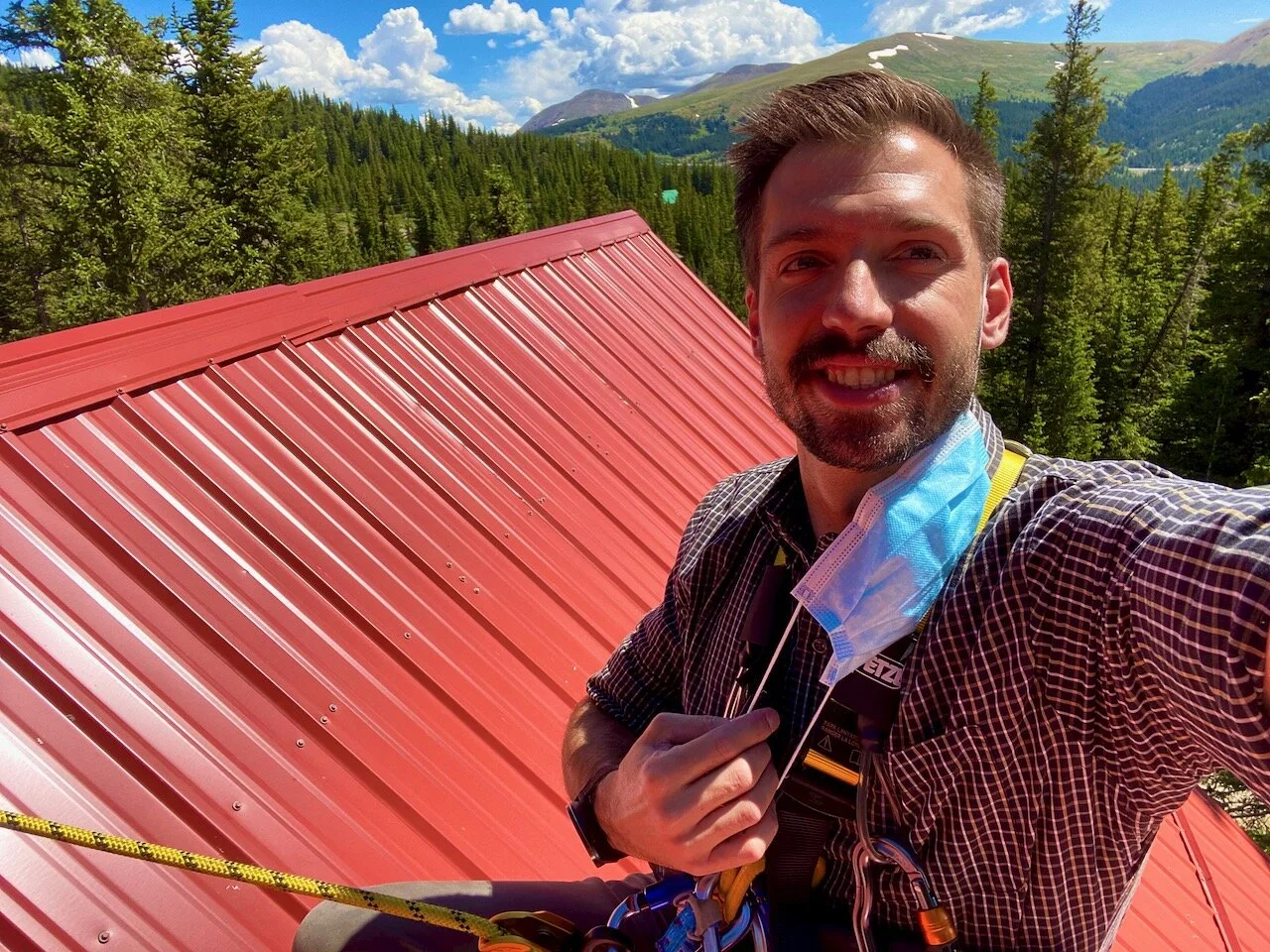Walking on the Roof
Walking on the Roof
At Two Moose Home Inspections our inspectors are trained to safely climb most all roofs using assistance from a safety line that keeps them safe from the time their feet leave the ground all the way up to the peak of the roof. Drones and 360 cameras work well but nothing can beat having feet on the roof during a roof inspection.
The inspector is able to view aspects of the roof with greater clarity than any arial camera can provide. No inspector is ever required to walk on a roof, but if the roof appears to be safe and the client has requested the add-on service of walking the roof, the inspector will do their best to get onto the roof.
Does My Roof Need Walked
Not every roof should be walked on. Some roofs are made of clay, concrete, stone, or wood which can all be damaged by walking on them. Materials such as metal can be very dangerous to walk if there is any level of moisture on the surface, but during dry conditions metal can be walked on.
If your roof can be walked on, then more information will be found by walking on it. For example; there is no way to know if the sheathing under the shingles is soft and rotten unless the roof is walked on during the roof inspection.
How Much Does A Repair Cost
Roof repairs range from hundreds of dollars to tens of thousands of dollars. The cost to repair a roof is dependent on more than just the materials that need to be replaced. The accessibility and pitch of a roof greatly affect the cost of a repair.
Some repairs are very straight forward and easy to repair such as a damaged vent cover, but other repairs may require a coordinated response such as a damaged plumbing penetration which may need work to be performed by a plumber and roofer.
What Could Go Wrong
This category of what could go wrong with a roof would include hundreds of issues or problems, but instead of creating an exhaustive list lets focus on the two most common issues we find when we get on roofs.
In Colorado we have large amounts of snow fall which requires homeowners to either hire a contractor to remove the snow from the roof or the homeowner will do it themselves. Snow Removal often results in damage to the roof covering because many companies will chip away at ice buildup which results in cuts in the roof and missing shingles. These repairs can be very expensive.
The second most common issue that is found is roof covering failure caused by exposure to the sun and elements. At our elevation in the Rocky Mountains of Colorado we have intense sun and strong storms. If the manufacturer claims the roof is a 30-year roof you could easily expect to need to replace the roof after 20 years just because of the area that we live in.
What’s the Next Step
There are many issues that could occur with a roof from a missing clip for the heat tape to a complete structural failure of the roof system. The first step is identifying the severity of the issue. Some issues are so severe that a structural engineer may need to come to the house to verify that it is safe to occupy, and other issues may be less than a one hundred dollar repair.
The inspection report will classify the issues found using a color code such as blue, orange, and red. Red should be a clear indicator that the issue is sever and may need to be resolved quickly or that the issue will most likely be expensive to repair. Orange issues are common issues that may require a contractor’s expertise to repair, or it may be a simple fix that may require special equipment like a tall ladder to get to the spot that needs repaired. Blue items are often easy fixes or just general information for you to know.
You can then use the inspection report findings to discuss negotiation options with your realtor. You could then work with your realtor to ask the seller to repair the issues or provide a credit for the repairs needed.
The Two Moose Home Inspections Process
If the roof is not safe to walk on, the inspector will inspect the roof from the ground and use the 360-degree camera on the end of a carbon fiber pole to take photos and inspect the roof from different angles.
If the roof is safe to walk on and the client has request the add-on service, the inspector will setup safety ropes and a ladder to climb the roof. If the pitch of the roof is low enough and the inspector feels safe walking without the ropes, the inspector may perform the inspection in that manner.
While the inspector is on the roof, they will take pictures of any issues that are identified and add them to the report. Once the inspector has completed the inspection they will then come down from the roof and put away their tools before moving to the next part of the inspection.
Our pricing and availability is located on the Two Moose Home Inspection website when you click “Schedule an Inspection”. You can schedule everything online and you will see an invoice and pre-inspection agreement from us once we get access to the house from the homeowner.
If you have any further question, please send us a message.

